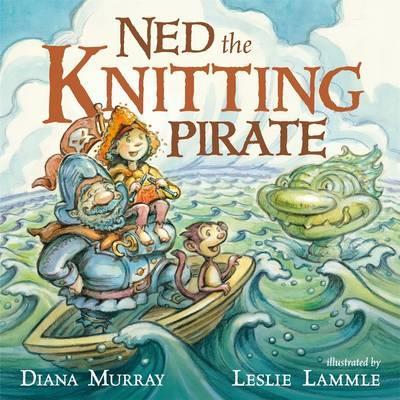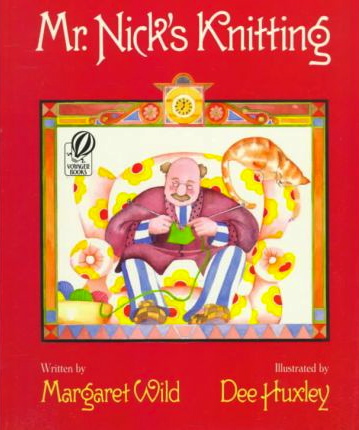a beautifully illustrated call to be wary of first impressions—and to seek out the best in life
/“‘Don’t talk such nonsense,’ said the fierce little woman. But for the first time in her life, she smiled.”
THE FIERCE LITTLE WOMAN AND THE WICKED PIRATE
by Joy Cowley, illustrated by Sarah Davis – Gecko Press, 2010
ages 2 to 8 years / picture books + emotional resilience, funny, heartwarmers
There’s a scene in Emma (by Jane Austen), where Emma is talking to her friend (or plaything depending on your viewpoint) Harriet about a proposal. Emma says, ‘You must be the judge of your own happiness.’—and then proceeds to tell her how to judge her happiness!
Most of us are spared an Emma in our lives—we mostly judge our own happiness and find our own way. But sometimes we can be so secure in our current happiness that it becomes difficult to envision a different happiness.
Children are prone to this too. It’s hard to give up something good for something better—be it a physical something or a social or emotional response.
In this story a ‘fierce little woman’ is fiery, independent and brave.
She has filled her life with knitting, fishing and bagpipe playing. A satisfying life—but lonely and vulnerable.
When she hears a knocking on her door during a storm she refuses to open it. An understandable decision when the knocker describes himself as ‘a wicked pirate’! The pirate threatens to break down the door, and the fierce little woman threatens to whack him with her knitting needles, hit him on the head with her bagpipes, and tie him up in fishing line and throw him into the sea.
It’s not until the pirate confesses, ‘I’m very scared of the dark’ that the woman softens, and bravely lets him in. With new blue and green knitted socks on their feet, love blooms and although she calls the pirate's proposal ‘nonsense’, ‘for the first time in her life’ the fierce little woman smiles.
“‘ … would you consider being my wife?’”
The pirate and the woman are married. The woman turns out to be not at all fierce and the pirate not at all wicked.
They have ‘three children who are never fierce, and only sometimes wicked.’ They swim in the summer, fish in the winter, and ‘once in a while …the little woman plays them a lullaby on her bagpipes, so they won’t be scared of the dark.’
It’s the story of leaving a good life for a better life, of judging ones own happiness and finding the way to greater happiness. Wonderful for children, hopeful and inspiring for adults who read to them.
The power in this book:
It’s an engaging and gentle treatise on the dangers of judging—others or self!
The pirate is wonderfully portrayed by the pictures, with an air of arrogance that makes his stated wickedness entirely plausible—but that arrogance vanishes as night draws in and is replaced with fear. Then, as a husband and father he is instead tender, loving and kind.
The ‘fierce little woman’ has a skeptical look when the pirate knocks, a determined and angry disposition when he persists, and a cautious defensive look when she allows him into her home. But none of those things really define her. She’s happy, loving and thoughtful—she simply didn’t know that about herself earlier.
It’s an amusing reminder to be brave. There’s a lot of bravery involved in the woman’s choice to let the pirate in—borne of compassion as bravery often is—and she has a wonderfully wary face as she sits with the pirate wearing the new socks she knitted. But her bravery results in happiness, as bravery often does! There’s bravery from the pirate too, as he admits his fears.
It’s a joyful look at family life. There’s a purity to the joyfulness of the life the woman and the pirate make for themselves that is perfectly shown in the pictures. The joys of shared work, simple pleasures, and children are beautifully illustrated.
It’s full of encouragement to try new things. The pirate and the woman each have to leave behind their previous lives to embark on a new life together, a life full of change. I especially love the way the fierce little woman’s house changes—at the beginning while she lives alone, it's a simple upright little house at the end of the jetty. And by the time we reach the last page, there have been additions. It’s still sturdy, still at the end of the jetty, but now it has a crow's nest with a pirate ship and some ramshackle additions. A sweet metaphor for the effects of embracing a new life.
A small reading hint:
The story here is told as much through the pictures as the words—as all good picture books are—so it’s worth taking some time to examine the pictures, to look at faces and guess at emotions, to think about life on a jetty, or to look for changes to the little woman’s house.
There’s a great deal to love in this book—the warmth of the characters, the life in the illustration, the lessons in the story. But most of all the way that the little woman and the pirate choose to change and become happier. It's boisterous, engaging and funny!
Book Depository has free postage anywhere in the world and great pricing, but Amazon might be cheaper for North American readers.
P.S. In case the fierce little woman’s knitting leaves you wanting more, you might also like these:










